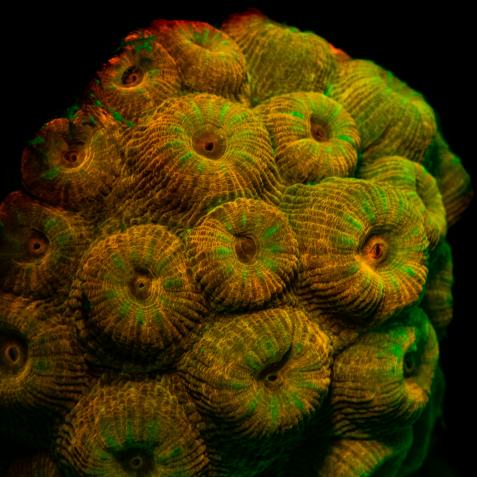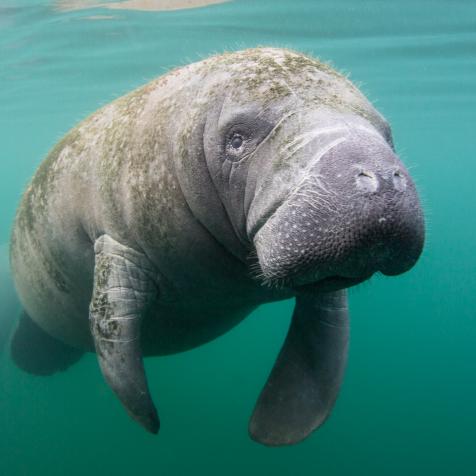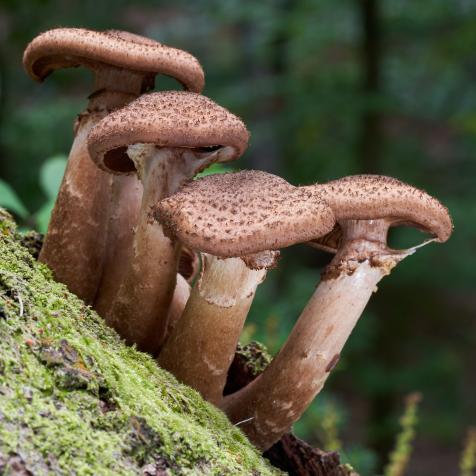
Shutterstock
This Giant Mushroom Is the Largest Organism Ever
These fungi are larger than blue whales and dinosaurs!
Quick, think of the largest organism ever. What'd you come up with? A dinosaur? Sorry, no — there's bigger. A blue whale? Good guess if we were asking about the largest animal, but we said organism. Giant redwoods aren't the answer, either. We're talking about the "humongous fungus," a colony of fungal clones that stretches over 2,385 acres.

Shutterstock
Not Mushroom to Grow
When you cover an area nearly equal to 4 square miles (9.7 square kilometers), you can't exactly hide easily. Still, while the presence of Armillaria ostoyae, also known as the honey mushroom, in Oregon's Blue Mountains was well known to researchers, it wasn't until 1998 that they discovered that all of the mushrooms in a 2,385-acre area were genetically identical. That means they're all clones of a single individual, and since they still maintain a connection to their origins, they're certainly a candidate for largest organism ever.
Even the tiny baby bellas you slice up for salads are actually part of a much larger organism. The stem-and-cap figure you probably imagine when you think of a mushroom is actually just a small part of the whole — they're the public face of a structure that stretches along a network of skinny, root-like tubes known as rhizomorphs. When those rhizomorphs pass through an area that could be suitable for blooming 'shrooms, they sprout up some extra heads to take advantage. From the surface, it might look like two complete different mushrooms several yards from each other. But underground, it's clear that they're really the same entity.
In 1992, a team of researchers discovered a colony of honey mushrooms in Michigan that absolutely trumped previous record-holders for the world's largest organism, weighing in at 10.5 tons (9,525 kilograms) and stretching across 37 acres (about 150,000 square meters). The team looking in Oregon later in 1998 wasn't expecting to beat the record — but that Michigan colony never had a chance.
Since they just keep finding more and more of this mushroom, it's hard to say exactly how huge it is, but estimates place it somewhere between 7,500 and 35,000 tons (6.8 million and 31.7 million kilograms). For comparison, the entire population of Portland is about 640,000. If you calculate an average weight of 136 pounds apiece, then the humans of Portland clock in at 43,520 tons — heavier than the mushroom, sure, but not by a whole lot.
A Clone by Any Other Name
But is it really fair to call these mushroom clones one organism? After all, any one of those caps could survive on its own. On the other hand, some people consider bee colonies to be a single organism, so surely an interconnected, genetically identical colony of fungi would count as well. That's why the question of what makes an organism is such a tough one, and it's even tougher when you're talking about plants and fungal colonies.
However, in the case of the Blue Mountain honey mushroom, most scientists are in agreement. First of all, each individual cap is genetically identical to all the others — interestingly, you can tell because genetically identical mushrooms will merge together when placed next to each other, even if they were picked miles away from each other. Second of all, the mushrooms are all in communication with each other via their rhizomorphs, and share resources accordingly. Third, and this is closely related to the second point, the mushrooms are all working toward a common purpose and are able to coordinate as such. When you look at it that way, it's pretty hard to argue that the millions of Oregonian mushrooms aren't all the same organism. We're just hoping it's not the beginning of a B-movie called "Attack of the 35,000-Ton Toadstool."
This article first appeared on Curiosity.com.


















